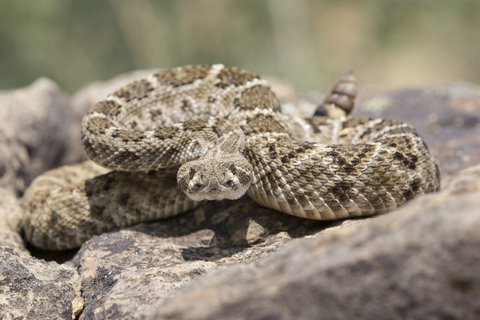Rattlesnakes are among the most venomous snakes in North America that outdoorsmen need to take special precaution around. We’ve shown you the 20 most venomous snakes in the world and how to avoid them altogether. But what to do if you actually get bitten by a rattlesnake?
Venomous snakes bite an estimated 7,000 to 8,000 people in the United States each year only resulting in about five deaths. In most cases those deaths are caused by not getting medical attention soon enough. If antivenom is administered with two hours of a bite, the probability of recovery is more than 99 percent.
RELATED: 4 Tips for Dealing with Snakes on the Trail
A recent story told by Dana Sanders, who was bitten in Mississippi by a timber rattlesnake, one of North America’s most venomous snakes, show just how damaging a bite from one of these snakes can be. Sanders told Field and Stream magazine recently how he was clearing was brush to practice target shooting when suddenly the snake bit him.
“The strike was the most unbelievable sensation; it was just so violent. I knew right away that a timber rattler had bitten me. When I raised my leg out of the brush, blood was pouring from the wounds, and I felt the pain almost immediately,” he told the magazine.
RELATED: 20 Most Venomous Snakes in the World
Sanders knew that getting to the hospital and receiving antivenom was the key to a healthy recovery. So they called 911 and rushed to the hospital.
“An ambulance met us halfway, and by that point, the pain felt as if a steamroller had run me over,” he said. “Doctors ended up using 12 vials of antivenin and had to remove two 2-inch holes of rotted tissue from my leg.”
If you do not have access to antivenom or in the meantime before it arrives, here are some dos and don’ts until help arrives.
- Remain calm, retreat from the snake and call 911.
- Remove any restrictive clothing or accessories like rings, bracelets and watches.
- Splint or immobilize the area of the bite and lay the victim down to elevate the area above heart level.
- Only apply a tourniquet above the bite if the victim is more than an hour away from the hospital.
- Sucking out the venom is also not recommended unless you’re more than an hour from medical attention and must be done within five minutes of the bite.
- Keep the victim warm and comfortable to maintain a low heart rate.
- If you can, take a picture of the snake, otherwise stay the heck away.
Snakes
-
Inland Taipan
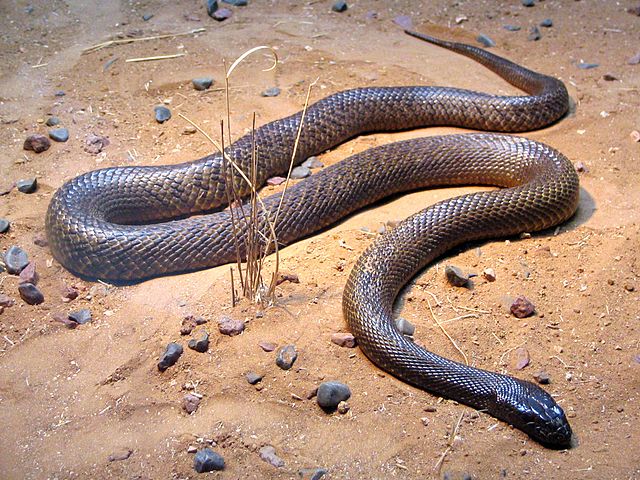
Considered the most venomous snake in the world based on the median lethal dose value in mice, the inland taipan venom, drop by drop, is by far the most toxic of any snake. Found in the semi-arid regions of central east Australia, it is commonly known as the western taipan, small0scaled snake or the fierce snake.
Photo credit: Wikimedia
-
Eastern Brown Snake
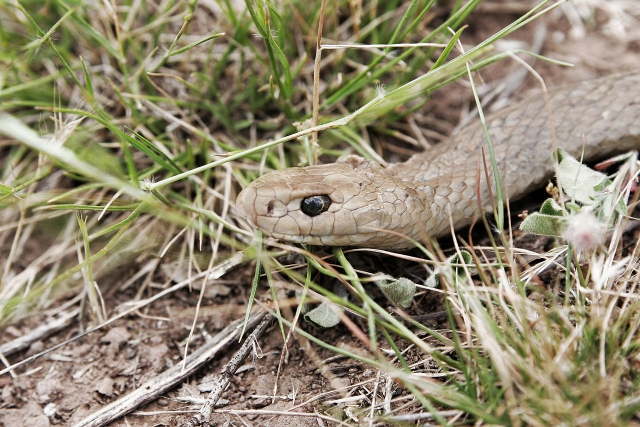
The eastern brown snake or the common brown snake is considered the second most venomous snake in the world. It's native to Australia, Papua New Guinea and Indonesia.
Photo credit: Wikimedia
-
Black Mamba

One of the most venomous snakes in the world, the black mamba is found in parts of sub-Saharan Africa. When threatened it opens its inky black mouth, spreads its narrow neck-flap and sometimes hisses.
Photo credit: Wikimedia
-
Indian Cobra
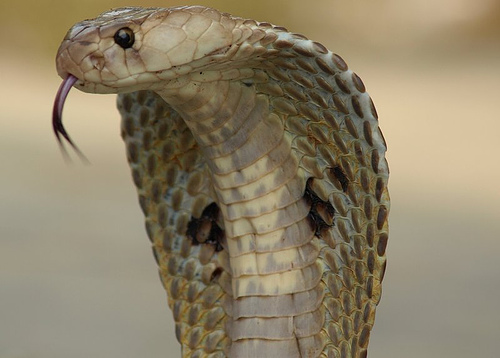
Although its venom is moderate, the rapid-acting qualities of the Indian cobra venom make it more dangerous than most. For this reason, mortality rates are rather low although symptoms come on fast.
Photo credit: Wikimedia
-
Saw-scaled viper
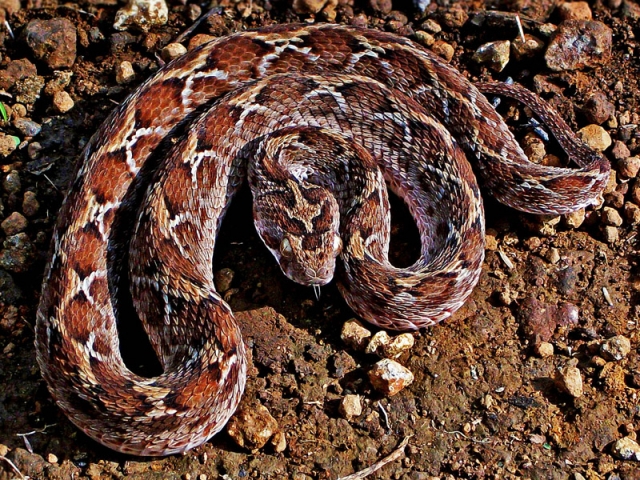
Though small in size, its attitude makes the saw-scaled viper a venomous force to be reckoned with. This snake ranges from India, Pakistan, Sri Lanka, parts of the Middle East and Africa north of the equator, making it responsible for many human fatalities each year.
Photo credit: Wikimedia
-
Russell's Viper
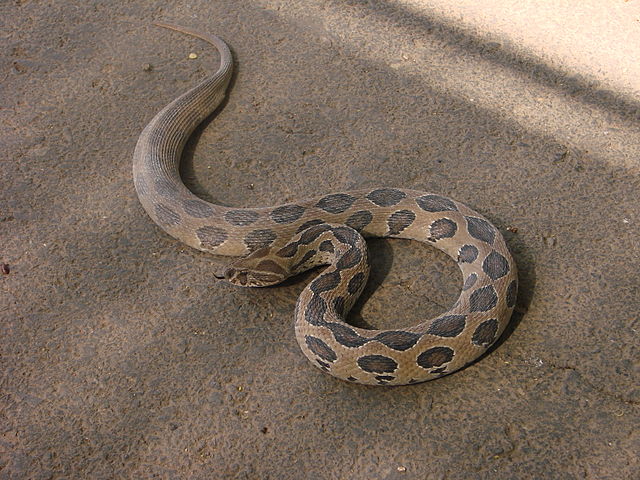
One of the most painful bites comes from the russell's viper, which is known to cause internal bleeding. This is a very aggressive snake that can be extremely irritable found mostly in India and Southeast Asia.
Photo credit: Wikimedia
-
Common Krait
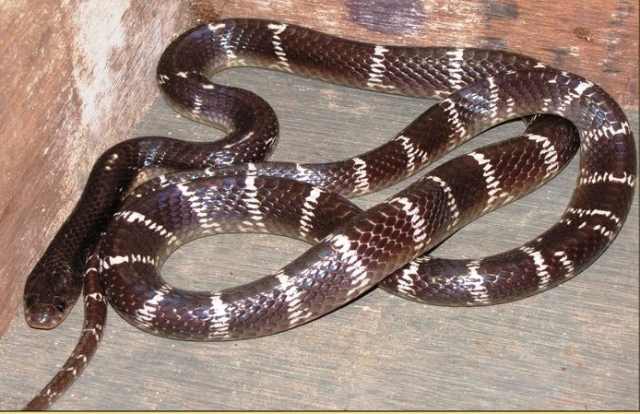
Often considered the most dangerous snake in India, the common krait can induce muscle paralysis quickly. Once paralysis has developed after a bite from a common krait it's often impossible to reverse even with anti-venom.
Photo credit: Wikimedia
-
Coastal Taipan
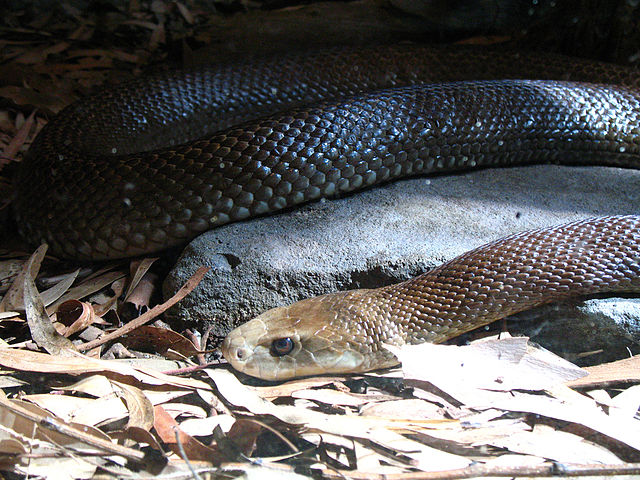
The coastal taipan is a venomous snake found in northern and eastern Australia and the island of New Guinea. Adults can reach four feet and are most active in early morning.
Photo credit: Wikimedia
-
Terciopelo
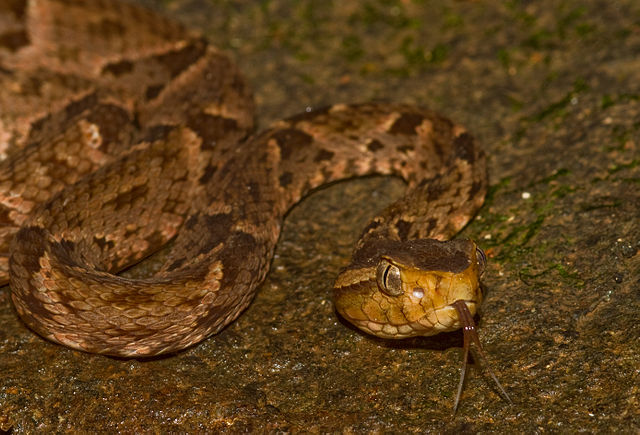
The terciopelo, considered the most dangerous snake in Costa Rica, is known to move extremely fast, though usually choosing to flee than confront a threat. In Venezuela it's responsible for 78 percnet of all snakebite fatalities.
Photo credit: Wikimedia
-
King Cobra
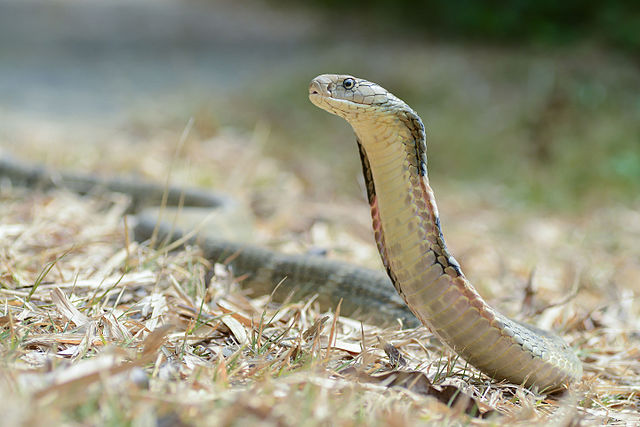
Found mostly in forests throughout India and Southeast Asia, the king cobra is the world's longest venomous snake reaching lengths of 18 feet. It preys mostly on other snakes and sometimes rodents.
Photo credit: Wikimedia
-
Many Banded Krait
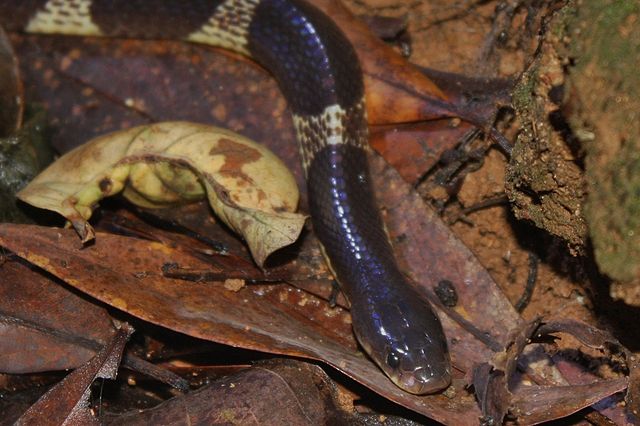
Also known as the Taiwanese krait or Chinese krait, the many banded krait is endemic to central and southern China and Southeast Asia. It's mostly found in marshy areas and it's nocturnal.
Photo credit: Wikimedia
-
Western Green Mamba
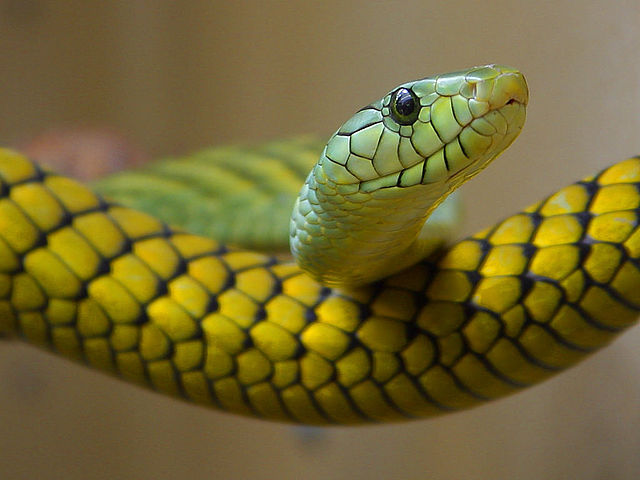
The western green mamba also known as the west African green mamba is extremely nimble and dangerous, preferring to spend most of its time in the trees.
Photo credit: Wikimedia
-
Eastern Green Mamba
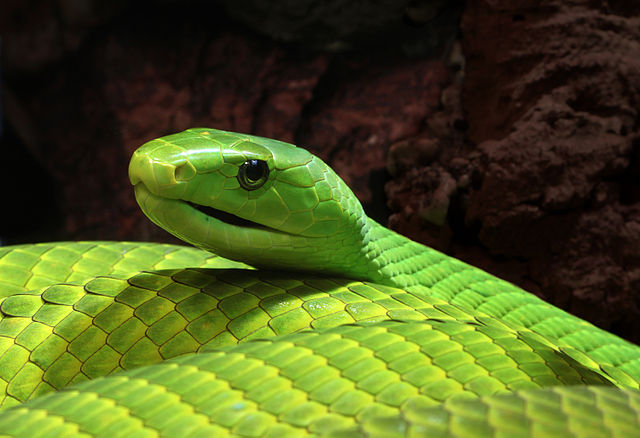
Like other mamba, the green mamba spends most of its time in the trees. A single bite contains enough venom to kill several humans. The eastern green mamba is typically found in eastern Africa.
Photo credit: Eastern Green Mamba
-
Jameson's Mamba
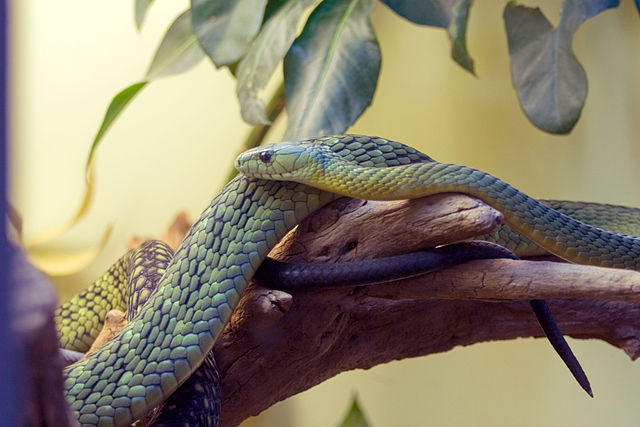
The Jameson's mamba is another in the mamba family to look out for. Highly venomous, this snake is also found in Africa.
Photo credit: Wikimedia
-
Caspian Cobra

The caspian cobra is mostly found in Central Asia and averages around 1 meter in length.
Photo credit: Wikimedia
-
Phillipines Cobra
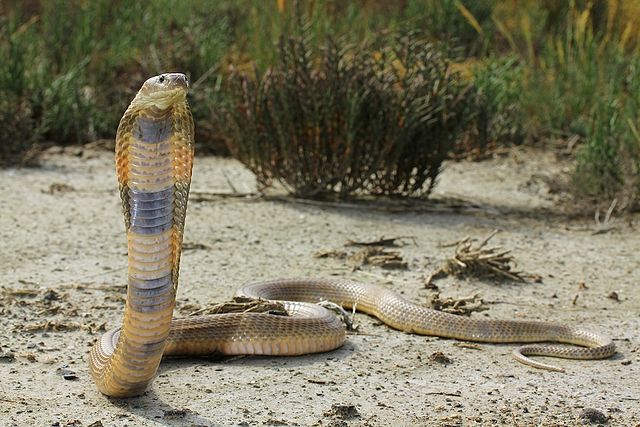
The Phillipines cobra is typically found in northern Phillipines, known for being stocky, highly venomous spitting cobra.
Photo credit: Wikimedia
-
Common Death Adder
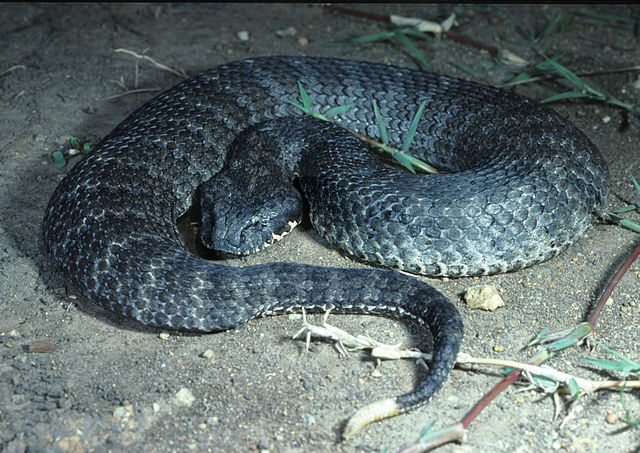
Just your common death adder. Nothing to be worried about here. It's only one of the most venomous land snakes in Australia, but is increasingly becoming more rare.
Photo credit: Wikimedia
-
Tiger Snake
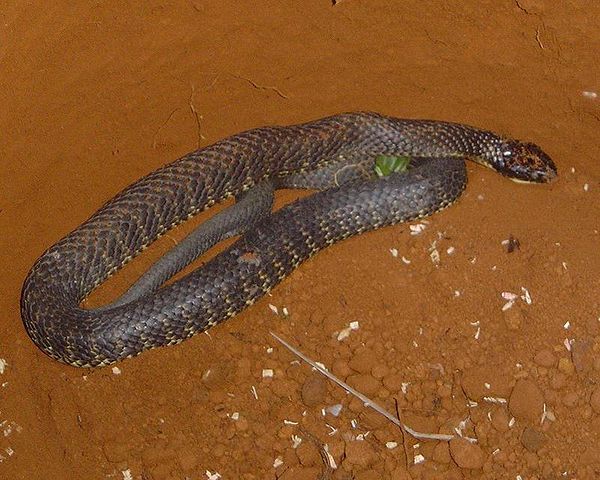
Tiger snakes are often found in the southern region of Australia and come in many colors though always with the banded pattern like a tiger.
Photo credit: Wikimedia
-
Forest Cobra
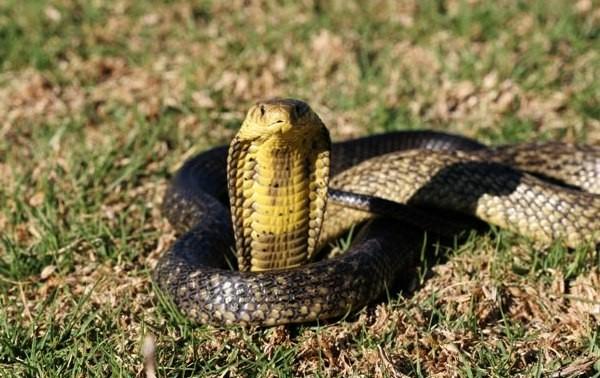
The forest cobra is the largest in the cobra family and considered a highly irritable and aggressive snake. In one area if Guinea in 2008, 375 bites from the forest cobra resulted in 79 deaths.
Photo credit: Wikimedia
-
Gaboon viper
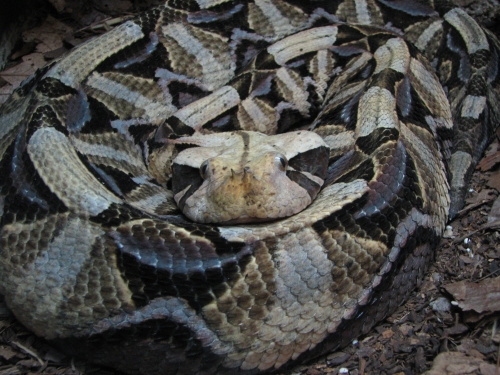
Native to the rainforests and savannas of sub-Saharan Africa, the Gaboon viper has the distinction of being the world's heaviest viper and the longest fangs that can reach up to two inches in length. Because of this, it has the highest venom yield out of any species.
Photo credit: Wikipedia
